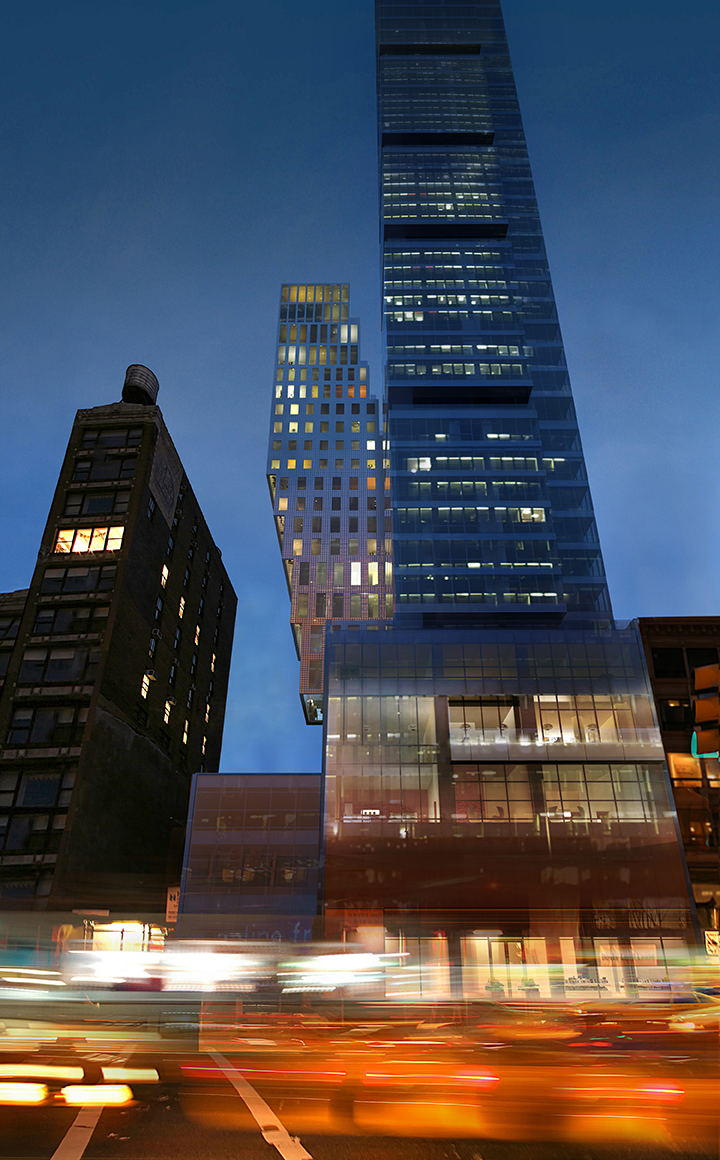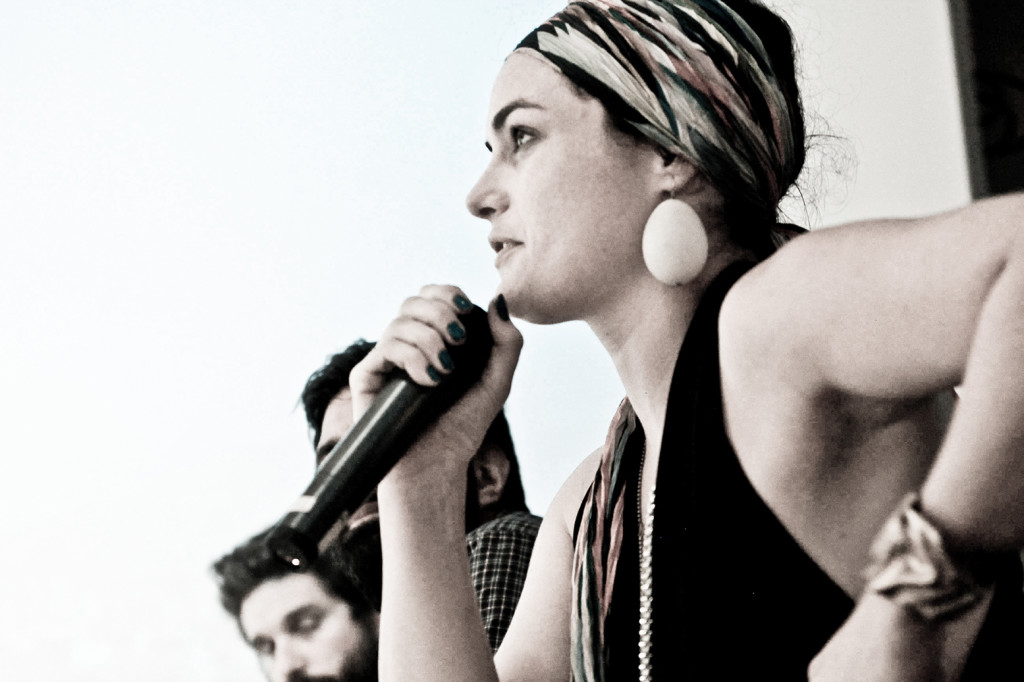Shohei Shigematsu

an interview by Andrea Debilio
Prima di scrivere la mia intervista a Shohei Shigematsu, direttore di OMA NY, ho ripreso un testo che lessi anni fa e che ha fortemente influenzato la mia crescita professionale. “Delirious New York” Rem Koolhaas lo scrive nel 1978, ma resta un manifesto critico sulla città di Manhattan decisamente attuale. New York è insieme simbolo del progresso e “Capitale della Crisi Perpetua”, il “Manhatthanism” è espressione di un processo politico, economico e sociale. OMA ha sempre dimostrato sensibilità nel proporre soluzioni, al di la degli aspetti meramente tecnici, ed è quello che la società attuale ci chiede, perché spesso è proprio l’architettura a generare cultura.
AD: Cosa ti ha spinto a diventare architetto?
SS: Quando ero più giovane, sapevo che avrei voluto un lavoro fortemente legato al “sistema”. In quel momento l’architettura mi sembrava l’unico modo per coinvolgere quella parte di società che poteva ancora permetterti di creare qualcosa, ma oggi potrei pensare a molti altri modi…
AD: Come è cambiato il tuo pensiero architettonico da quando eri studente e quali fattori hanno influenzato questo processo?
SS: Quando ero uno studente…al tempo credevo sarebbe stato importante per me avere un dogma o uno stile particolare, un’ideologia. Ora il mio lavoro si concentra più sulla comprensione delle caratteristiche particolari di ogni progetto. Di conseguenza sono più interessato alle reazioni specifiche sul risultato di un lavoro. Credo che questa sia stata la mia scoperta più importante.
AD: Economia e politica hanno sempre avuto un forte legame con l’architettura. Ci rendiamo conto però, che le nostre aspettative come giovani architetti debbano confrontarsi con una crisi globale con pochi precedenti. Non è il futuro che ci era stato promesso e che ci saremmo aspettati. Ostacolo o motivazione?
SS: Il rapporto tra architettura, economia e politica ha avuto un forte impatto sulla mia carriera. Molti momenti chiave della mia vita hanno coinciso con periodi di crisi: sono nato nel 1973, durante la prima crisi petrolifera, frequentai l’Università nel 1991 quando crollò la “Bolla economica” giapponese, lavoravo al Concorso per la CCTV nel 2001 (lo stesso anno del 9/11) e diventai partner di OMA nel 2008 proprio durante la Credit Crisis. Per esperienza quindi direi ostacolo e motivazione allo stesso tempo, in risposta mi sono sempre preoccupato di vedere il potenziale in ogni circostanza.
AD: Gli architetti dovrebbero cercare di guardare al futuro cercando di prevederlo, o piuttosto dovrebbero concentrarsi sul presente ed indirizzarlo verso la rotta più giusta?
SS: Penso sia difficile prescindere da una o dall’altra cosa. Non è facile concentrarsi solo sul futuro non avendo percezione di cosa sia possibile nel presente. Al contrario, sarebbe un problema se l’architettura si perdesse nell’interpretare il futuro senza proporre soluzioni valide nell’immediato.

AD: Quando l’architettura é una causa, quando una cura?
SS: Mi augurerei che l’architettura avesse sempre un forte impatto su ciò che la circonda e che al tempo stesso ne risolvesse gli eventuali problemi — dalla complessità di un luogo specifico fino alle grandi domande sociali ed economiche.
AD: Credi ci sia ancora qualcosa di nuovo che possa essere espresso attraverso l’architettura o é stato già detto tutto?
SS: In architettura non é corretto concentrarsi esclusivamente sulle novità. È importante che non si progetti basandosi su quanto sia stato già detto o meno, ma sugli argomenti giusti ed al momento giusto, cercando di capire come dare continuità a quanto già espresso in precedenza. Naturalmente, la continua evoluzione delle tecnologie esistenti ed i nuovi metodi di progettazione stanno creando diverse forme di espressione in architettura. Non credo, tuttavia, che questo significhi necessariamente che stiamo dicendo qualcosa di nuovo.
AD: Credi esistano regole da cui non si possa prescindere, che dovremmo rispettare nella progettazione, o tutto è soggettivo?
SS: L’uno deve necessariamente escludere l’altro? Non sono certo ci siano regole fondamentali da seguire necessariamente, ma credo in una certa obiettività che permetta alla soggettività di poter emergere.

AD: Koolhaas, “Generic City”, Augè, “Non luoghi”: architetti, sociologi e filosofi sembrano avere un’idea chiara di dove stiamo andando e quali errori stiamo commettendo. Come credi potremmo preservare la nostra identità usando la globalizzazione come opportunità?
SS: Penso che per mantenere una forte identità sia importante comprendere sia la situazione globale che quella locale. Concentrando l’attenzione sul rapporto tra queste realtà sarà possibile difendere le proprie identità, questo anche attraverso il sistema che la globalizzazione può metterci a disposizione.
AD: Facendo riferimento al pensiero di Bjarke (Big), pensi che ciascuno debba agire in contrapposizione ad idee e movimenti precedenti o in sinergia?
SS: Beh, credo nel darwinismo… Certamente non esiste
un’ideologia così netta da cui doversi distaccare necessariamente, quindi credo che che “costruire” tenendo in considerazione correnti di pensiero precedenti sia la scelta migliore.
ENGLISH VERSION_________________________________________________________________
Before writing my interview with Shohei Shigematsu, director of OMA NY, I picked up a book I read years ago and that has strongly influenced my professional growth. Rem Koolhaas’ Delirious New York is “a Retroactive Manifesto for Manhattan” written in 1978, but currently relevant. New York is both a symbol of progress and “Capital of Perpetual Crisis”, the “Manhatthanism” is an expression of political, economic and social issues. OMA has always shown sensitivity proposing solutions, beyond merely technical aspects. That’s what society is asking us, because it often appears that architecture generated culture.
AD: How did you decide to become an architect?
SS: When I was younger, I knew that I wanted to have a job with a strong connection to society. At the time, Architecture seemed like the only way to engage society that would still allow you to create something—so I became an architect— but today I can think of many other ways…
AD: In what ways has your architectural thinking evolved since you were a student and what factors influenced this process?
SS: When I was a student, I thought at the time that it would be important for me to have a particular belief or style—a specific ideology. Now, my work is focused more on an understanding of the specifics of each project’s context. As a result, I am more interested in the specific reactions in any given project. I think that has been my main eye-opener.
AD: Economy and Politics have always been strongly connected to architecture. we realize though, that our expectations as young architects brutally crash with the global economic crisis – this is not the future we were waiting for. Do you consider this as a hindrance or motivation?

SS: For me, the relationship between architecture, economy, and politics had a strong impact on my career. Many key moments in my life have coincided when moments of crisis—I was born in 1973 during the First Oil Crisis, I attended University when Japan’s Bubble Economy collapsed in 1991, I was leading the CCTV Competition Entry in 2001 (the same year as 9/11) and I became a partner at OMA in 2008 in the same year as the Credit Crisis. From these experiences, I have seen this both as a hindrance and motivation and in response I have always tried to find the potential within each moment.
AD: Should architects look into the future, trying to predict it, or should they rather focus on the present and push it towards the right future direction?
SS: I think it is difficult to do one without considering the other. It is problematic to focus only on the future without an understanding of what is possible in the present. Conversely, it is often a problem that architecture can get caught up in imagining the future without specifying a way to take action within the present.
AD: When do you consider architecture as a cause and when as a cure?
SS: I wish that architecture always has an impact on its surroundings and at the same time that it always addresses certain issues—from difficult site conditions to larger social or economic questions.
AD: Do you believe there is still something new that can be expressed through architecture, or has everything already been said?
SS: Focusing on newness alone in architecture is problematic. It is important that architecture is not designed based on whether something has been said or not – but based on the right argument at the right moment and an understanding of how to create a strong relationship with what has been said before. Of course, the continued evolution of existing technologies or methods to create something new will create new ways to say things in architecture; but I don’t think that this means we are necessarily saying something new.

AD: Do you believe there are some ‘a priori’ rules that we can learn about and that we should follow in designing, or is everything subjective ?
SS: Does one necessarily exclude the other? I’m not sure that I see a set of fundamental rules that we can learn about but I do believe in a certain objectivity within which certain subjectivities can hopefully emerge.
AD: “Koolhaas “Generic City”, Augè ” Non Places”: architects, sociologists and philosophers seem to have an idea of where we are going and which are the possible mistakes. How do you think we can preserve our identity using globalization as an opportunity?
SS: I think in order to maintain a strong identity it is important to balance an understanding of both the global and local situation. By focusing on the relationship between these two realities, it seems possible to maintain specific identities through the context that globalization can provide.
AD: Referring to Bjarke’s opinion, do you believe one has to create in opposition to or along with previous movements and ideas?
SS: Well, I do believe in Darwinism… But, for sure, there isn’t such a strong ideology that we need to detach from today so I suppose that suggests that we have to create along with previous movements and ideas.
Related Posts :
Category: Article
Views: 2766 Likes: 0
Tags: andrea de bilio , city vision , city vision mag , Delirious New York , Manhattan , oma , rem koolhaas , Shohei Shigematsu
Comments:
Info:
Info:
Title: Shohei Shigematsu
Time: 25 ottobre 2012
Category: Article
Views: 2766 Likes: 0
Tags: andrea de bilio , city vision , city vision mag , Delirious New York , Manhattan , oma , rem koolhaas , Shohei Shigematsu






